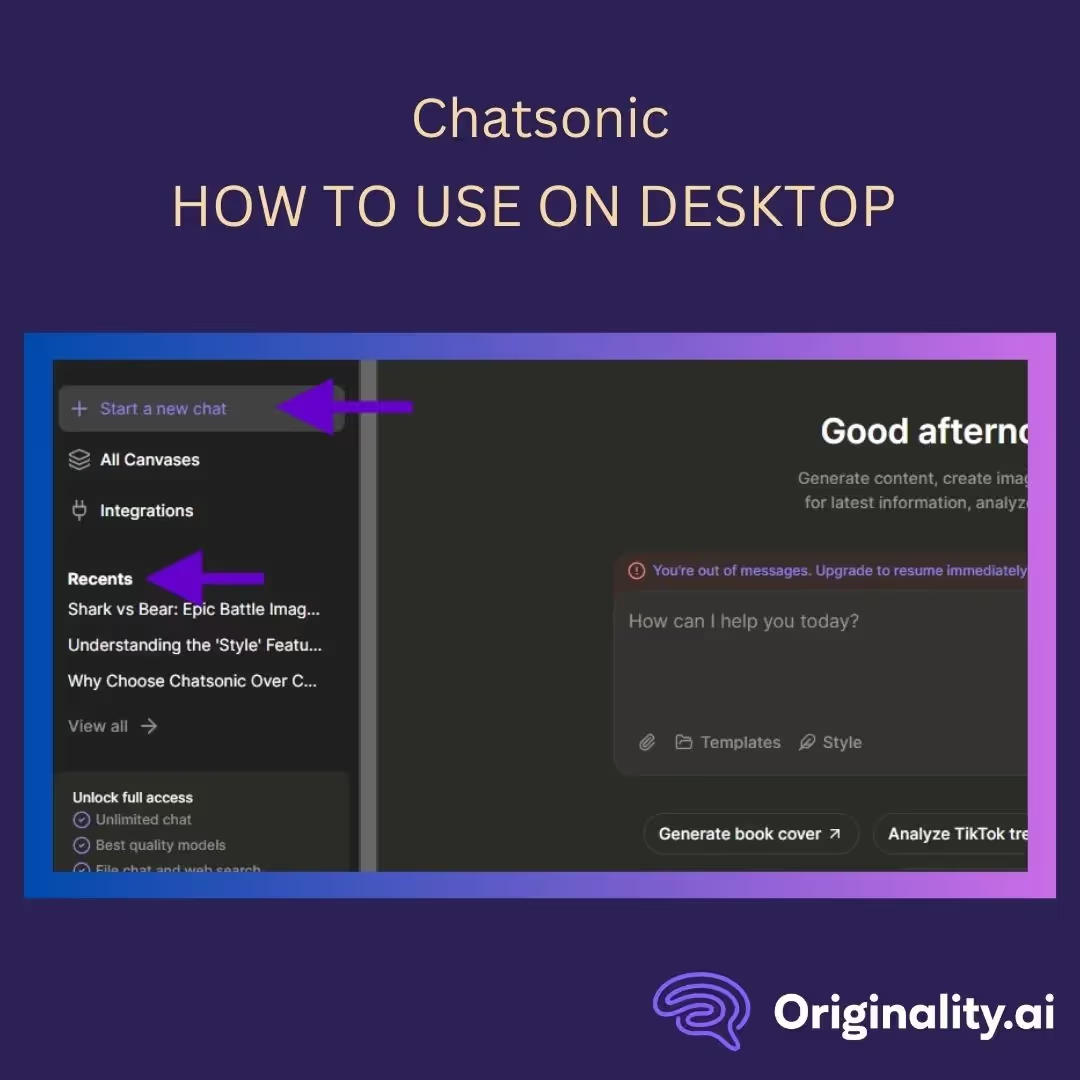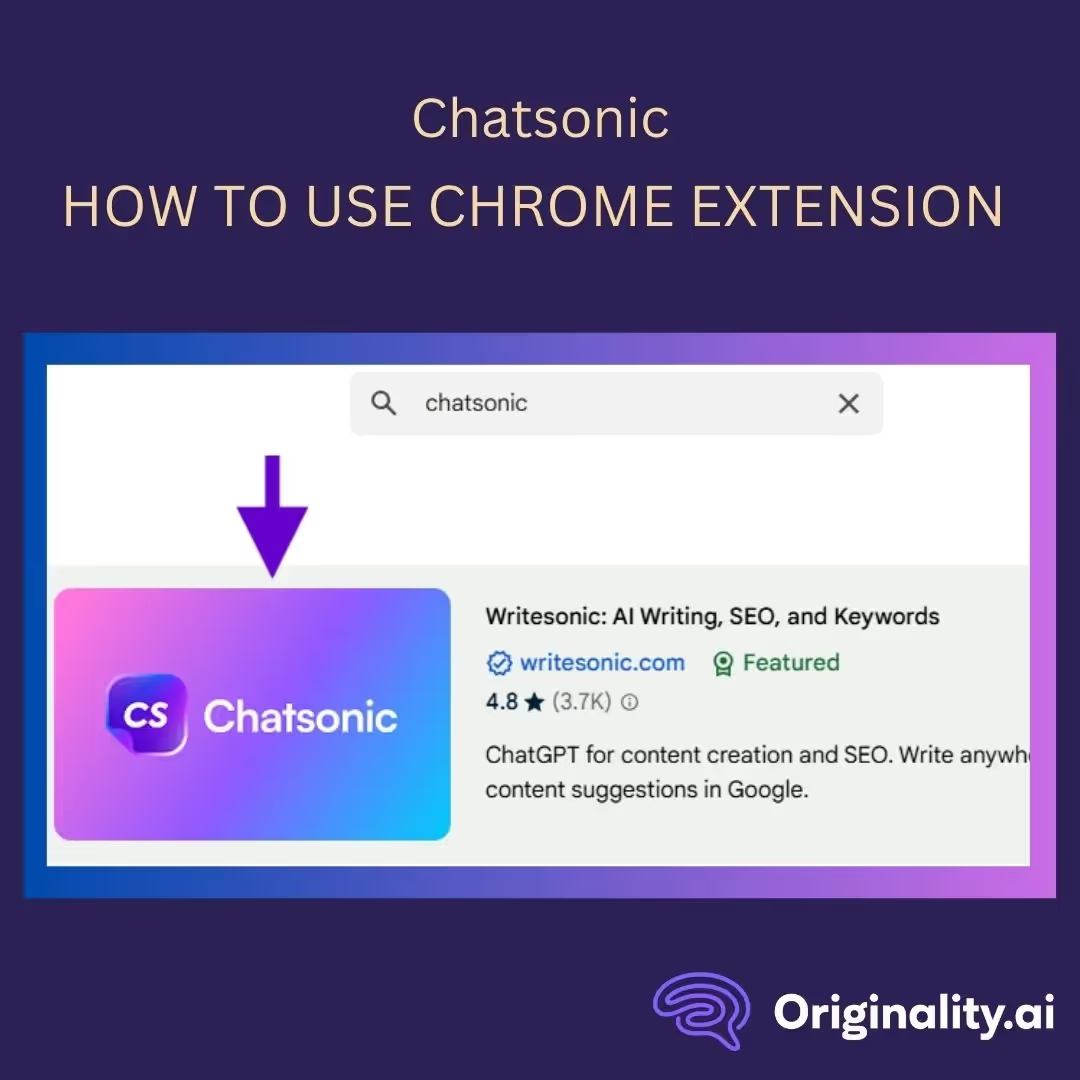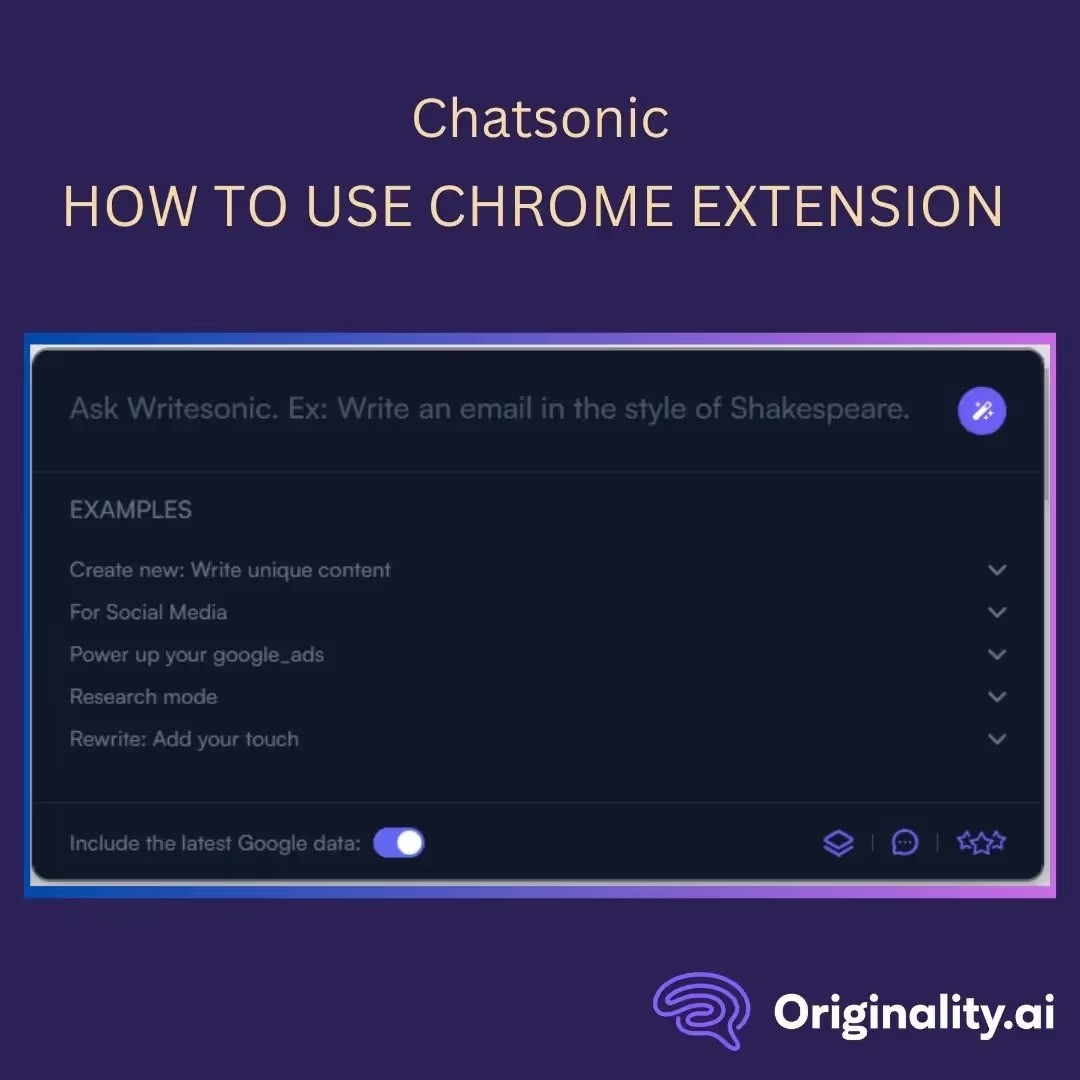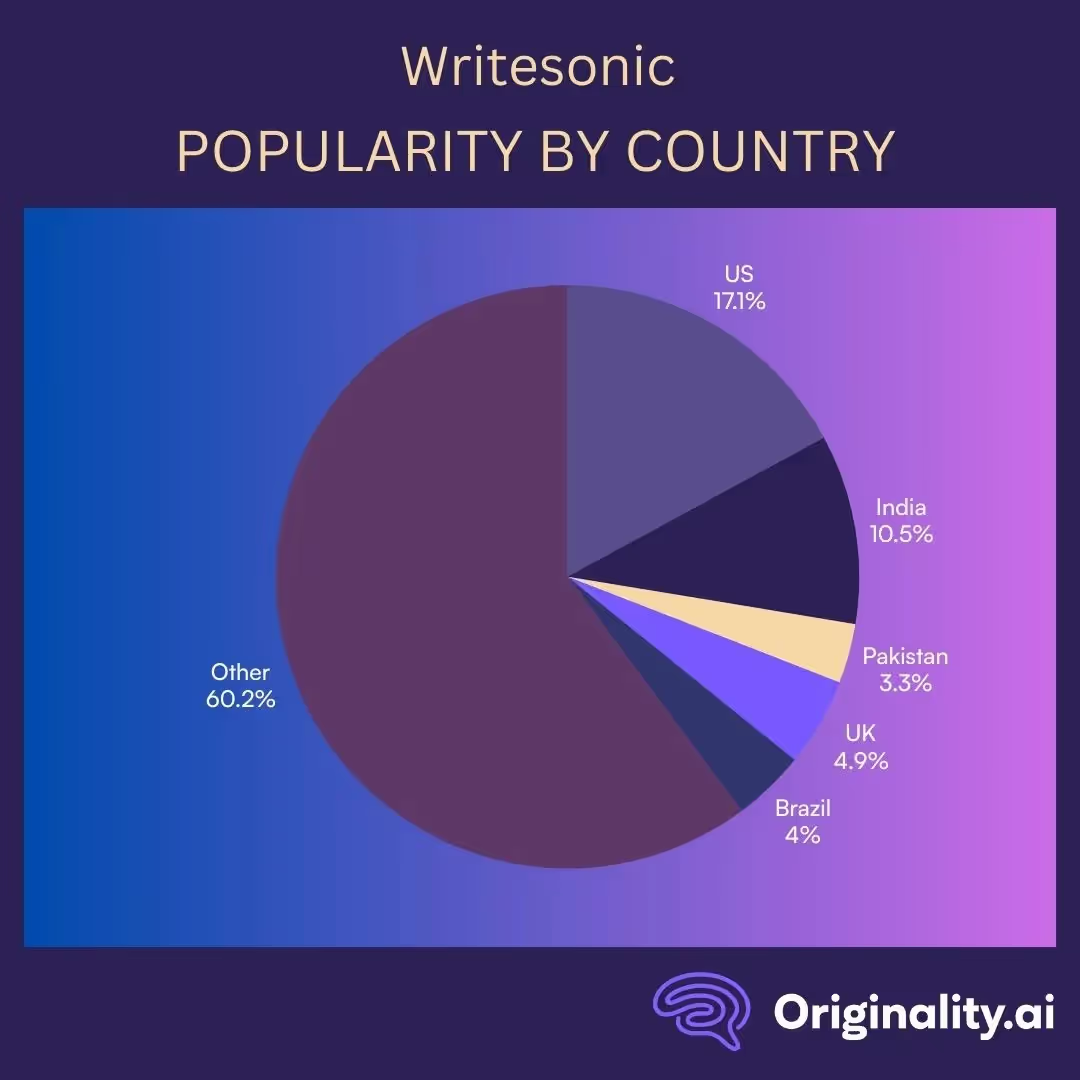What if your AI assistant could do more than just talk? Well, if you ask the team over at Writesonic, it can do quite a bit.
Chatsonic by Writesonic may appear to be just another conversational AI chatbot on the surface, but it’s more than that. It combines the power of multiple AI models with popular marketing tools to help streamline the content creation process.
So, what’s the story behind this supercharged ChatGPT?
Let’s dive into some essential Chatsonic facts and statistics to explore everything from how it works to where it came from, and why it’s becoming a go-to tool for the world’s most productive marketers.

Chatsonic is a conversational AI chatbot that leverages multiple AI models to help users research, create, optimize, and publish content quickly and easily. (Source)
Although anyone can use the tool for content creation, Chatsonic’s integration with various marketing tools and automated workflows makes it an ideal AI chat platform for marketers. (Source)
(Source, Source, Source, and Source)
The beauty of Chatsonic is that it brings popular AI models, tools, data, and workflows together in one convenient platform. How does it pull it all off? Well, it uses some advanced technologies to do so.
Chatsonic incorporates various technologies in its chat platform, including Google Search Integration, verified sources and citations, GPT-4, DALL-E, Stable Diffusion, and Natural Language Processing (NLP).
Here’s how each one contributes to Chatsonic’s features and functionalities:
(Source, Source, Source, and Source)
Better yet, Writesonic is constantly evolving and improving its AI technology over time. It does this in three ways:
(Source)

Writesonic was founded by Samanyou Garg in January 2021. (Source)
However, he first started work on Writesonic in October 2020. (Source)
The tech enthusiast came up with the first version of the tool when he kept running into the same issue with his various side projects: writing content for landing pages. (Source)
Even though he received the 2019 Global Undergraduate Awards for his research on Group Emotion Recognition using Machine Learning, Garg didn’t have any marketing or copywriting experience. (Source and Source)
So, he went back to what he did know: tech. He decided to see if he could create an AI tool that could generate effective landing pages. (Source)
As luck would have it, OpenAI had just launched GPT-3. (Source)
Garg quickly saw the potential of this new technology and used it to build an AI-powered landing page generator in just a few days. (Source) His hard work and quick thinking ended up paying off — the product went viral. (Source)
Not one to rest on his initial success, Garg kept at it and officially launched Writesonic’s AI Article/Blog Writer in January 2021. (Source)
Garg and the Writesonic team continue to release and update their suite of products to help achieve their overall mission: to enable everyone to create high-quality, cost-effective content quickly with the help of AI. (Source)
Just look at the changes they’ve made to Chatsonic over the years.

Writesonic periodically releases changelog articles and social posts about Chatsonic as product release announcements.
Let’s take a look at the product history for Chatsonic:
Chatsonic was officially released in December 2022. According to Producthunt, it was launched on December 12, 2022. (Source)
Writesonic also announced Chatsonic’s launch on X (formerly Twitter) and in their changelog articles. (Source and Source)
Now, you’d think they may have wanted to take a break after the launch, but that’s just not Writesonic’s style.
About two weeks later, on December 27, 2022, they announced their first round of upgrades and Chatsonic V1.1. (Source)
Chatsonic V1.1 could now:
(Source)
Users could also copy responses to the clipboard and download their chats as PDFs or Word documents. (Source)
Only a few days later, on January 2, 2023, Writesonic introduced the Chatsonic API. (Source) As part of the recently released Writesonic API V2, they said the Chatsonic API enabled users to do all kinds of things, including:
(Source)
In March 2023, Writesonic announced its next update and introduced the Chatsonic Chrome extension. (Source)
With the Chatsonic Chrome extension, users could now get ChatGPT-like responses via their Chrome browser.
The release of the Chatsonic Chrome extension helped make content creation that much easier.
On November 29, 2023, Writesonic uploaded a video on YouTube to announce Chatsonic’s new GPT-4 Vision upgrade. (Source)
Claiming to transform user workflows, Chatsonic’s new GPT-4 Vision capabilities enabled users to:
(Source)
With so many useful updates in such a short time, there’s no doubt that Writesonic has put a lot of work into Chatsonic.

Over two seed rounds, Writesonic has received a total of $2.6 million. (Source) Let’s break it down.
On August 31, 2021, Writesonic announced its pre-seed round and raised $125K from Y Combinator (Source).
Y-Combinator is known for having one of the best startup acceleration programs in the world. It’s probable the funding was a result of Writesonic’s pitch at Y Combinator’s Summer 2021 Demo Day. (Source and Source)
A month later, on September 30, 2021, Writesonic announced its seed round. (Source) This time, it raised $2.5 million from eight investors, including:
(Source)
Ready to take this AI chatbot on a test drive? Here’s a brief guide on how to use Chatsonic.
To access Chatsonic’s desktop app, you first need to sign up for a Writesonic account. If you’re not ready to commit to a paid subscription, Writesonic offers a free plan. (Source)
However, you’re limited in the number of AI generations you can make — you’ll need to switch to a paid plan for unlimited access. (Source)
Once you’ve signed up, log in to your Writesonic account and look to the menu on the left side to access Chatsonic.

After clicking on the tool, you’ll be presented with the Chatsonic interface. Here, you click near the top of the lefthand menu to “Start a new chat,” or pick up where you left off by selecting a previous chat under the “Recents” heading.
Now, it’s time to start chatting! Simply enter your questions or instructions into the prompt input box, and Chatsonic will generate relevant responses. You can also click the “Add” button to upload PDFs, docs, or images to chat about their content, and even provide URLs that you’d like the tool to reference.

Need to take a break? To make it easier to find your chat again later, click the three dots next to the chat name to rename it.
Chatsonic’s responses, like other chatbots, tend to have a pretty generic tone and style. If you’d prefer more personalized responses, check out their Style feature.
To start customizing your writing style, click the “Style” icon at the bottom of the page. Here, you can add URLs, PDFs, and/or text snippets to train Chatsonic on your writing style.

If you look just to the left of the “Style” button, you’ll see an icon of a folder. This is where you can access prompt templates. These actions or workflows can help you research and write content with templates like:
With the help of both the “Style” and prompt templates features, Chatsonic can generate more customized, relevant responses.
Once you have the basics down, it’s worth checking out some of Chatsonic’s other features.
For example, you can ask it to generate images or even integrate it with other tools like Ahrefs, Keywords Everywhere, and Writesonic to help streamline content creation.
If you could use help organizing and managing some of the more important information you use with Chatsonic, try the Artifacts feature. With Artifacts, Chatsonic can identify and share complex content with you in a dedicated window, making it easy to work with later.
There’s no doubt that Chatsonic has some impressive features, but is really useful? Check out our Chatsonic review and Writesonic review for our take.
If you’d like to take advantage of Chatsonic’s capabilities while browsing online, consider installing the Writesonic Chrome Extension. It’s integrated into the Writesonic extension for all-in-one content creation. (Source and Source)
So, to help you leverage Chatsonic’s insights on the go, here’s a brief overview of how to use the Writesonic Chrome Extension.
Head on over to the Chrome Web Store and search for “Chatsonic” or “Writesonic”. Then, click on the extension and hit the “Add to Chrome” button near the top of the page.

Once installed, you’ll just need to log into your Writesonic account to get the extension up and running.
Yes, it’s that easy! Anytime you want to use Chatsonic in your browser, you just need to press “Ctrl+M” to call up the prompt input field.
Then, you can ask it to generate content right in your browser, toggle whether you’d like it to include the latest Google data, and even change the shortcut keys.

Since it’s integrated with the rest of Writesonic, you’ll also have access to some other cool features. For example, performing a Google search will call up useful metrics, such as:
With the Writesonic Chrome Extension, you no longer need to switch between tools to research, generate, and optimize your content — you can do it all right from your browser.

Although you don’t need to visit their website for their Chrome extension, about 1.5 million people find their way to writesonic.com monthly. (Source)
Here’s a breakdown of writesonic.com’s traffic sources on desktop as of December 2024:
(Source)
Writesonic.com receives most of its traffic from direct sources, though organic search isn’t too far behind.

So, where is all this desktop traffic coming from? As of December 2024, writesonic.com is most popular in:
(Source)
Writesonic.com is the most popular in the United States.

It may not be one of its top sources, but Writesonic does receive social media traffic from 17 networks. (Source) Writesonic.com’s top traffic sources from social media as of December 2024 are:
(Source)
Writesonic.com’s top social media traffic source is YouTube.

Visitors of all ages visit Writesonic’s website, but it’s more popular with some age groups than others. As of December 2024, the age distribution of writesonic.com’s website traffic is as follows:
(Source)
Writesonic.com gets most of its traffic from users in the age group of 25-34.

Here’s the gender distribution of writesonic.com’s website traffic demographics as of December 2024:
(Source)
The top keywords driving traffic to the Writesonic website aren’t too much of a surprise. As of December 2024, Writesonic’s top keywords by traffic share are:
(Source)
Although these are the most popular, there are about 7.4K keywords driving traffic to writesonic.com.
If Writesonic isn’t quite what you’re looking for, several alternatives and competitors are available. Writesonic.com’s top competitors and similar sites include:
(Source)
As an all-in-one marketing-focused AI chat platform, Chatsonic aims to bring everything you need for effective content creation together in one place. (Source)
Without the need to switch between AI models, tools, and data, you can transform your workflow, improving productivity overall.So, if you’ve been looking for an AI chatbot that can do more than just chat, give this ChatGPT alternative a try.
Get more insight into the latest in AI and apps in our statistics guides:
Have a few more questions about Chatsonic? Check out some of the most frequently asked ones below.
You can use Chatsonic for free! However, their free plan only gives you 25 one-time credits and five daily AI generations. You’ll also have limited access to AI models, Canvas, web browsing, data analysis, and image generation features. If you need more, you’ll need to opt for one of their paid plans. (Source)
As an AI-powered chatbot, Chatsonic can help you with every stage of the content creation process, from brainstorming ideas to researching topics to generating and publishing full articles. Best of all, you don’t need to switch between AI models to get things done — you can access them all from a single chat interface.
Chatsonic isn’t necessarily better than ChatGPT — it depends on what you’re looking for. If you like the idea of a marketing-focused AI chat solution with features like brand customization, then Chatsonic would be a good choice. On the other hand, if you’re looking for more of a general-purpose assistant ChatGPT could be a better fit.
